Study Fig. 3.1, which shows a river drainage basin.
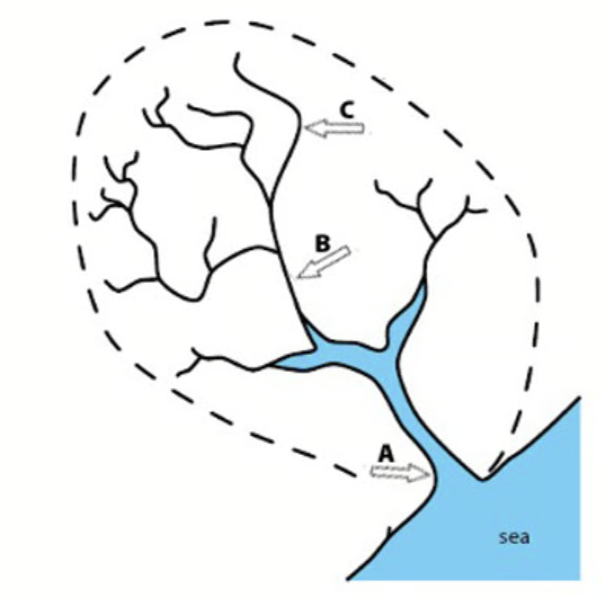
Using Fig. 3.1, identify the following the river features A, B and C.
Did this page help you?
Syllabus Edition
First teaching 2025
First exams 2027
Exam code: 0460 & 0976
Study Fig. 3.1, which shows a river drainage basin.

Using Fig. 3.1, identify the following the river features A, B and C.
How did you do?
Did this page help you?
Study Fig. 3.1, which shows information about flows through a drainage basin.
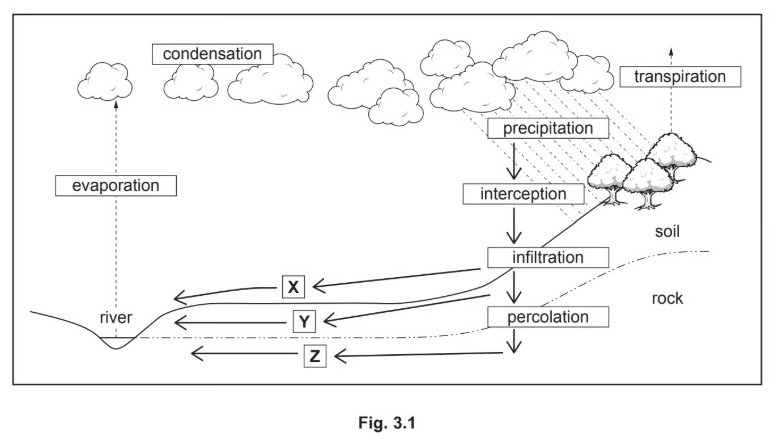
What is meant by transpiration?
How did you do?
Identify the processes which take place at X,Y and Z in Fig 3.1.
How did you do?
Explain why the amount of interception varies:
From place to place.
At different times of the year.
How did you do?
Did this page help you?
Study Figs. 1.1 and 1.2 which are photographs showing two different rivers and their valleys.

Fig 1.1

Fig 1.2
Describe the similarities and differences between the rivers shown in Figs. 1.1 and 1.2.
How did you do?
Did this page help you?
Study Fig. 3, which is a flow diagram showing processes in a drainage basin.
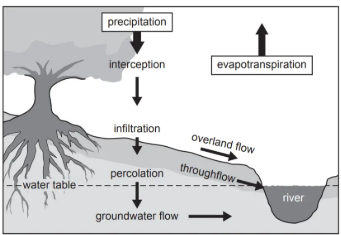
Fig.3
What is a drainage basin?
How did you do?
Suggest three reasons why overland flow may occur in a drainage basin.
How did you do?
Did this page help you?
Study Fig. 4, which is a photograph of part of a river.
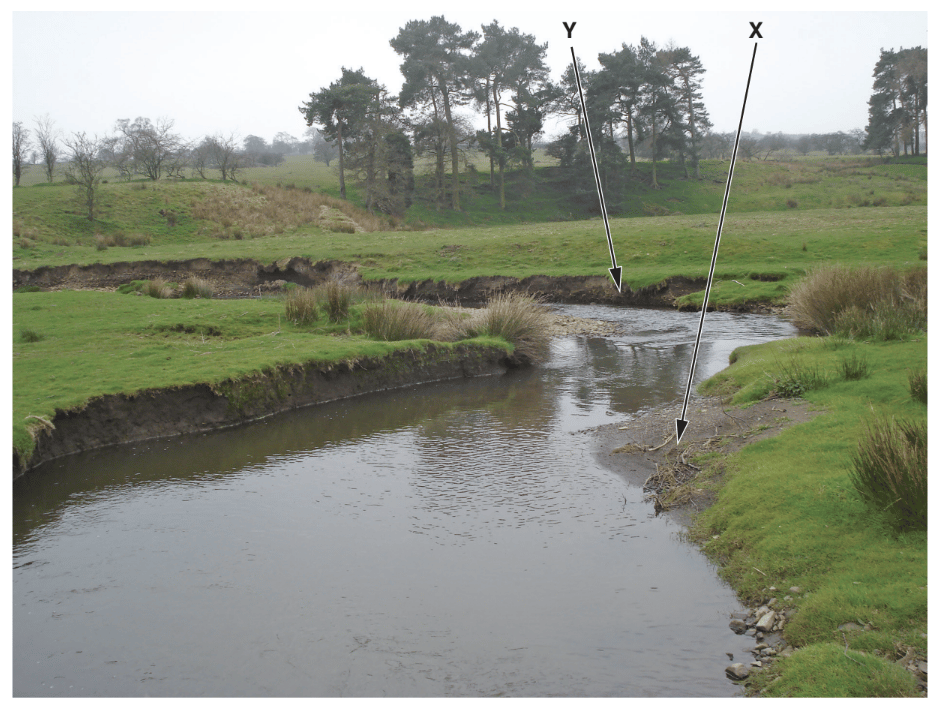
Fig 4
What river feature is shown in Fig. 4?
Underline one answer in the list below:
confluence meander potholes source
How did you do?
Describe two characteristics of the feature labelled X on Fig. 4.
How did you do?
Did this page help you?
Study Fig. 5.1, which shows a map of an upland area, and Fig. 5.2, which is a photograph of a waterfall.

Fig. 5.1

Fig. 5.2
Which location A, B, C or D is the most likely position of the waterfall shown in Fig. 5.2?
How did you do?
Identify features X and Y in Fig 5.2.
How did you do?
Explain why a gorge may form downstream of a waterfall.
How did you do?
Did this page help you?
Which river feature is shown in Fig 7.1?
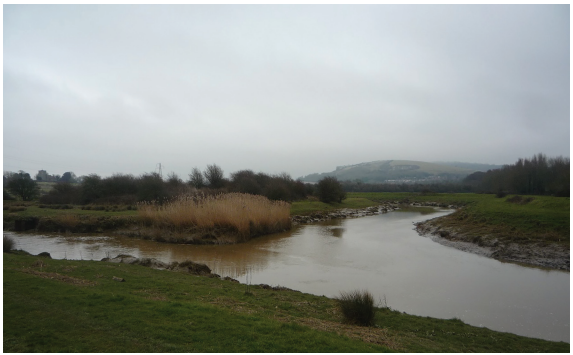
confluence oxbow lake potholes source
How did you do?
What evidence from Fig. 7.1 suggests that:
the river is carrying a large load in suspension?
deposition is taking place?
How did you do?
Another area where a river deposits its load is on its delta. Explain why deposition takes place on a delta.
How did you do?
Did this page help you?
Table 6.1 gives the definitions of some terms used in the study of rivers and drainage basins.
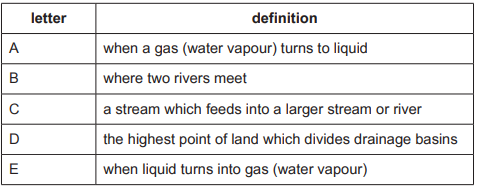
For each of the following terms give the letter for the correct definition from Table 6.1:
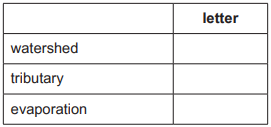
How did you do?
Did this page help you?
Explain how the landform labelled X in Fig. 7.1 was formed.
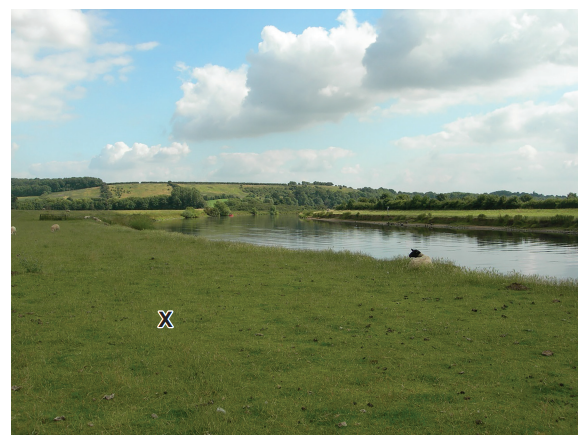
How did you do?
Did this page help you?
Suggest reasons why the amount of infiltration may vary .
How did you do?
Did this page help you?
Describe the changes in the characteristics of a river from its source to its mouth using the following headings:
width .........................................................................
depth.........................................................................
speed of flow.............................................................
gradient.....................................................................
How did you do?
Did this page help you?
Study Fig. 3.1, which shows different parts of a river and its valley.

Explain why deposition is likely to take place in the area shown in A in Fig. 3.1.
How did you do?
Did this page help you?
Study Fig. 4.1, which is a photograph of part of a river.

Figure 4.1
Suggest how the course of the river shown in Fig. 4.1 may change in the future as a result of natural processes
How did you do?
Did this page help you?
Explain how rivers erode their valleys.
How did you do?
Did this page help you?
Explain how a delta is formed.
How did you do?
Did this page help you?
Describe the changes which occur along a river and its valley from its source to its mouth. You should refer to processes and landforms.
How did you do?
Did this page help you?
Explain the river processes involved in the formation of a waterfall.
How did you do?
Did this page help you?
Explain the river processes involved in the formation of a meander.
How did you do?
Did this page help you?
Study Fig. 1.1 and explain the river processes involved in the formation of the landform shown at X.
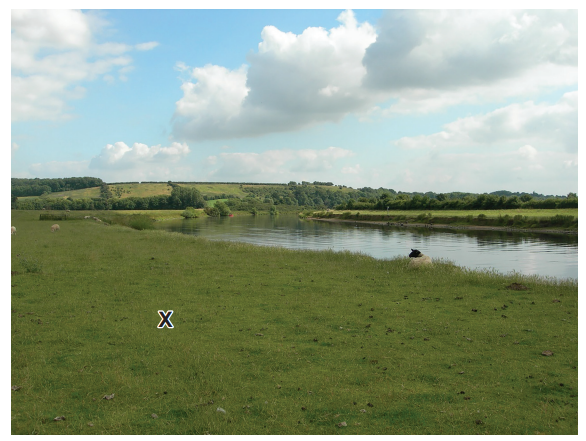
How did you do?
Did this page help you?
Explain the importance of both erosion and deposition in the formation of oxbow lakes.
How did you do?
Did this page help you?